
views
The Rhythm Method

Clap your hands as you say a word. Try to form a steady beat for every individual sound you make. For example, ba (clap) - na (clap) -na (clap). This word has three claps, one for every syllable. Words have a natural emphasis when you say them regularly. The word "banana" sounds like banana because it stresses the middle syllable. Coordinate your claps with the natural stresses and emphases of a word. Start with bigger words that you know have more than one syllable, like "hippopotamus." The more syllables there are, the longer and more rhythmic your beat will be, making it easier to divide the word.
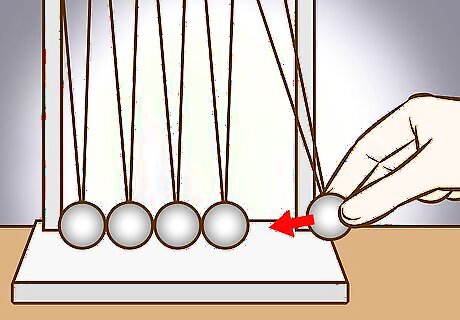
Use a metronome or Newton's cradle to make a beat. Say a part of the word every time you hear a "click" noise. Try to be silent at the same times the metronome or Newton's cradle is silent. Only say a syllable when you hear a click sound. This will help you split up a word into its smallest audible segments. This might be easier than clapping because your focus is mostly on saying words and not so much on creating a rhythm. You can also use your hands to tally the syllables in particularly long words. If using a metronome, pick a fast but steady tempo. Most hit songs fall into the 120 beats-per-minute (BPM) range, suggesting that maybe most people appreciate sound at this speed. Try setting your tempo to 120 bpm and saying words on tempo.
The Visual Method
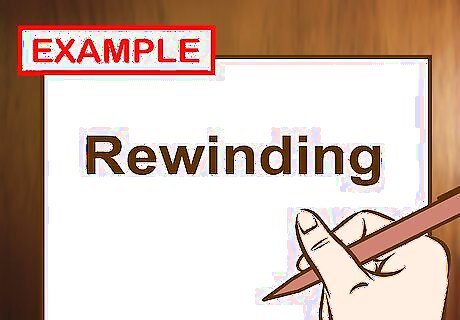
Write a word down on a piece of paper. Use big letters and leave some room between letters to separate syllables. Write the word in a blue. You will later be drawing vertical lines to separate syllables, which you can color in red. This will provide visual contrast and help you picture how words are broken up. Look at where the vowels fall in your word. Every syllable will have a vowel, but may not always have a consonant.
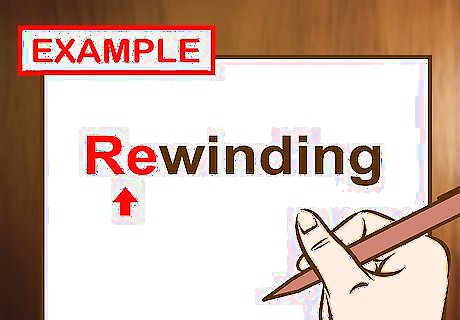
Identify any prefix in a word. Prefixes are sets of letters added to the beginning of a word to give it a specific meaning. For example, the word "play" is different than the word "replay." "Play" means to show something once; "replay" means to show something again. Many prefixes are usually one syllable, for example rewind, predetermine, and postmortem. Some prefixes have more than 1 syllable. If your prefix has more than one vowel and the vowels are separated by consonants, it is more than one syllable. For example, "anti" is a prefix with two syllables. "Ant" is one syllable and "i" is the other. Prefixes with more than one vowel that are not separated by consonants most likely are only 1 syllable. For example, "eu" in "eulogy" is only 1 syllable.
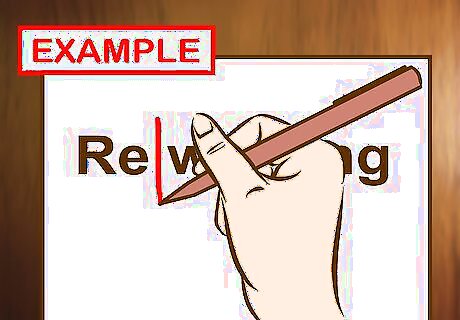
Draw a line after the prefix of the word. Separate the prefix from the remaining letters in your word. For example, "re | wind." Now you can start to see how your word is made up of smaller chunks of letters. For prefixes with more than one vowel, look at the where the vowels fall. If your prefix has more than one vowel and has consonants between them, draw a line after the first consonant that follows your first vowel. For example: "an | ti." Many words don't have prefixes. If your word doesn't have a prefix, don't worry about this step.
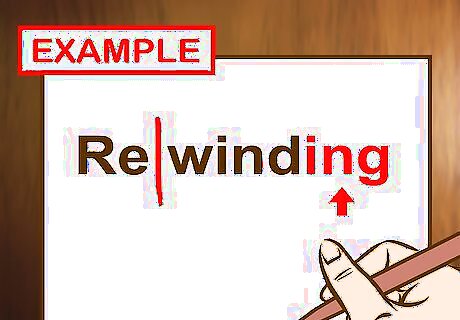
Identify any suffix of a word. Suffixes are like prefixes, but they are added to the end of the word to make them mean something different. For example: "calculate" means something different than "calculator. Calculate is when you find the amount of something; calculator is a tool for helping you find that amount. Like prefixes, suffixes are usually one syllable but can sometimes be more than 1. Common suffixes include "s," "ed," and "ing," as in "computers," "computed," and "computing."
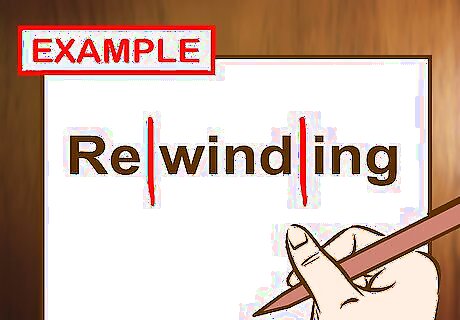
Draw a line before the suffix of a word. If your word has both a prefix and suffix, you should have two lines drawn in your word so far. For example: "re | wind | ing." If your suffix has more than one vowel, follow the same rule as with prefixes. If vowels have consonants between them, draw a line after the first consonant that follows your first vowel. For example: flex | ib | le. Some words don't have prefixes or suffixes. If your word does not have a suffix, do not draw a line.
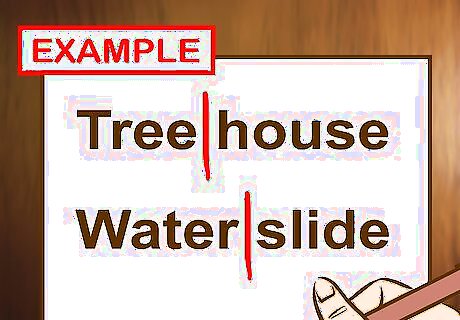
Divide any compound words. If there are two separate words have been put together, draw a line between them. For example: "tree | house" or "water | slide."
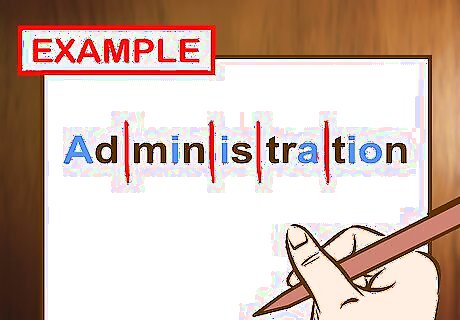
Draw lines in the remaining chunks according to vowel placement. If you have a section of letters with multiple vowels that are separated by consonants, divide it so that there is at least one vowel in each segment. For example, "comput | ing" would be broken up into "com | put | ing."

Say your word. Pause every time you get to a line. This should help you audibly separate your word into smaller chunks.



















Comments
0 comment